PAUL CATHERALL s linocuts of landmarks are almost as iconic as the buildings themselves. ROSEMARY WAUGH explores his process.

When asked why he chose to turn London’s iconic Modernist landmarks into boldly coloured prints, Paul Catherall says, “I think they always felt a bit like home to me.” The Coventry-born artist is one of the most popular printmakers working in Britain. With a commission for TfL under his belt and a solid reputation among art-loving Londoners, his works will likely be familiar to you, even if you don’t recognise his name.
Although more recent additions to the London skyline, such as The Gherkin, have found their way into his compositions, Catherall is best known for capturing Brutalist and Modernist buildings such as the Barbican and National Theatre. Raised in a city famous for its post-war reconstruction, the printmaker credits his affinity with this type of architecture as a subconscious drive (“I do like a good bit of concrete,” he claims).
Yet he didn’t start out looking to be associated with this famously Marmite – love it or hate it – form of design. In fact, if there was a conscious thought, it was related to how well the striking, clean shapes of the Hayward Gallery and others translated into linocut printing. “They’re already divided into nice, strong shapes,” he explains. “So it became the perfect subject matter.”
ATTENTION TO DETAIL
هذه القصة مأخوذة من طبعة November 2018 من Artists & Illustrators.
ابدأ النسخة التجريبية المجانية من Magzter GOLD لمدة 7 أيام للوصول إلى آلاف القصص المتميزة المنسقة وأكثر من 9,000 مجلة وصحيفة.
بالفعل مشترك ? تسجيل الدخول
هذه القصة مأخوذة من طبعة November 2018 من Artists & Illustrators.
ابدأ النسخة التجريبية المجانية من Magzter GOLD لمدة 7 أيام للوصول إلى آلاف القصص المتميزة المنسقة وأكثر من 9,000 مجلة وصحيفة.
بالفعل مشترك? تسجيل الدخول

Still life IN 3 HOURS
Former BP Portrait Award runner-up FELICIA FORTE guides you through a simple, structured approach to painting alla prima that tackles dark, average and light colours in turn
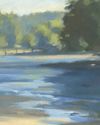
Movement in composition
Through an analysis of three masterworks, landscape painter and noted author MITCHELL ALBALA shows how you can animate landscape composition with movement
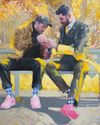
Shane Berkery
The Irish-Japanese artist talks to REBECCA BRADBURY about the innovative concepts and original colour combinations he brings to his figurative oil paintings from his Dublin garden studio

The Working Artist
Something old, something new... Our columnist LAURA BOSWELL has expert advice for balancing fresh ideas with completing half-finished work
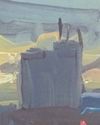
Washes AND GLAZES
Art Academy’s ROB PEPPER introduces an in-depth guide to incorporating various techniques into your next masterpiece. Artwork by STAN MILLER, CHRIS ROBINSON and MICHELE ILLING

Hands
LAURA SMITH continues her new four-part series, which encourages you to draw elements of old master paintings, and this month’s focus is on capturing hands

Vincent van Gogh
To celebrate The Courtauld’s forthcoming landmark display of the troubled Dutch master’s self-portraits, STEVE PILL looks at the stories behind 10 of the most dramatic works on display
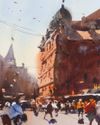
BRING THE drama
Join international watercolour maestro ALVARO CASTAGNET in London’s West End to paint a dramatic street scene
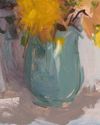
Serena Rowe
The Scottish painter tells STEVE PILL why time is precious, why emotional responses to colour are useful, and how she finds focus every day with the help of her studio wall

Bill Jacklin
Chatting over Zoom as he recovers from appendicitis, the Royal Academician tells STEVE PILL about classic scrapes in New York and his recent experiments with illustration